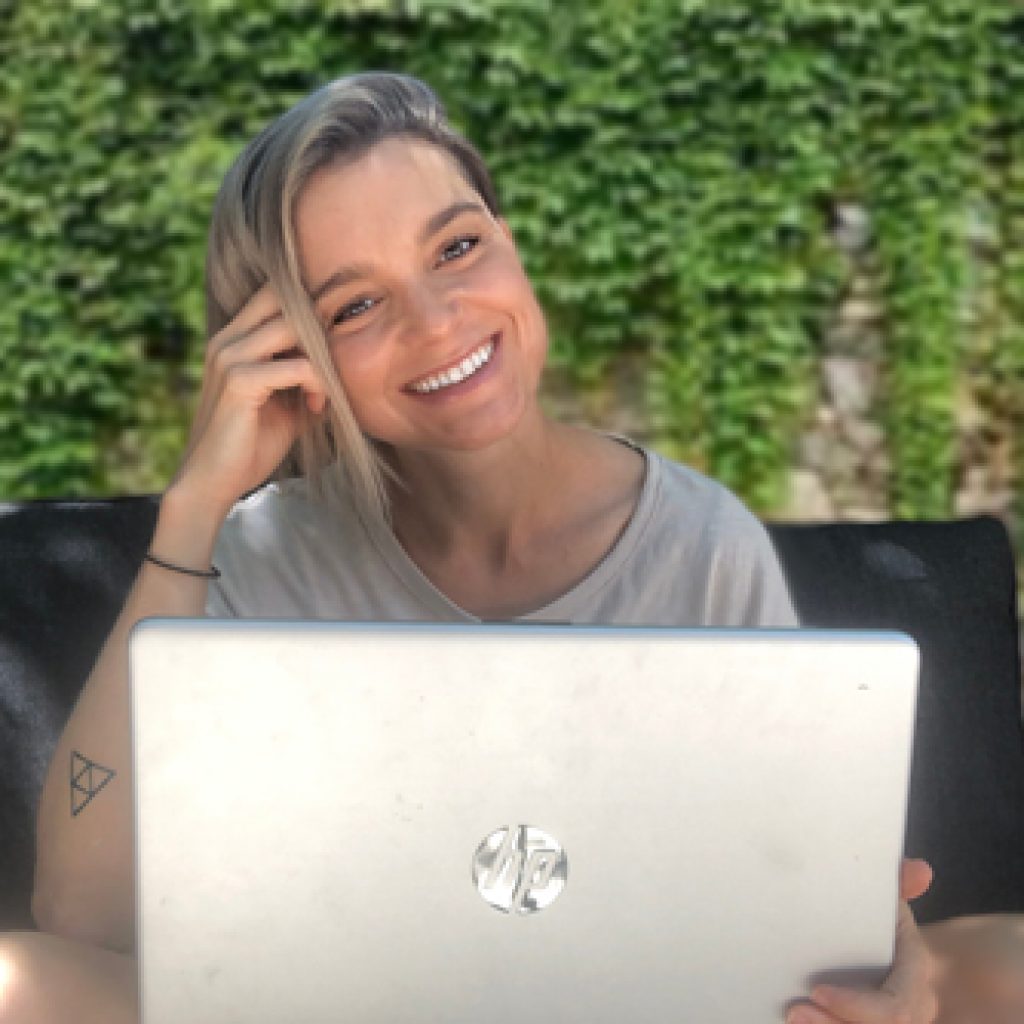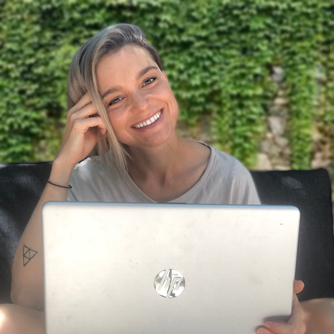Babies can sometimes do strange things that may leave parents and caregivers wondering – why do they do that? Is it normal? And most importantly, is it safe? The common “prone” posture – where a baby sleeps curled up over their knees, with their butt up in the air (like “child’s pose” in yoga) – is one such behavior that may have you wondering whether or not this sleep position is safe.
In this article, we’ll discuss several reasons why babies sleep this way in the first place, along with other important questions on this topic.
Why Do Babies Sleep On Their Knees?
Research has shown that the stomach sleeping position is a risk factor for sudden infant death syndrome (SIDS).1
Some experts say that babies should sleep on their backs until they at least reach six months old.2 However, additional experts recommend practicing safe sleep habits under the baby is one year old.3 Babies may be able to start rolling over around four months old, though some doctors will tell parents that it’s okay to leave their baby once they start rolling.4
Despite these recommendations, a study from 2000 found that stomach sleeping was normal behavior at this age for healthy babies, and it still seems as common as ever today.5
So, why do they naturally gravitate toward this position?
1. Sleeping Curled Up Reminds Babies of the Womb
Experts say that sleeping curled up on their stomachs may remind infants of how they slept in the fetal position when they were in their mother’s womb.4 At this point in their young lives, many babies have spent more time in the womb than out of it. Getting into a position that feels like being back in the safety of the womb might feel familiar and safe.
2. Your Baby is Learning to Crawl
Some theorize that babies sleep in this position because it is a small step toward learning to crawl. In fact, research suggests that babies who sleep exclusively on their backs may have a slight delay in developing motor skills like crawling.6
However, experts add that the difference in development is minimal and that your baby should learn to crawl just fine, whether they sleep on their back or stomach. Practicing “tummy time” while your baby is awake could be a way to help them strengthen their crawling skills.4
3. This Sleeping Position Helps Reduce Stress
If you’ve ever taken a yoga class, chances are you’ve laid in “child’s pose.” This position is remarkably similar to how an infant sleeps.
There’s a reason this posture is a pillar in the yoga world; it provides benefits for both your body and brain. According to the Mayo Clinic, this pose helps stretch the muscles around the hips and is good for stress reduction.7 Yoga Journal adds that this particular pose can activate the parasympathetic nervous system to help promote a state of relaxation.8
Learn More: Best Baby Crib Mattress
Frequently Asked Questions
Should I keep flipping my baby onto their back?
Babies should be put to sleep on their backs for the first year, however, once they start to roll, most doctors recommend letting them stay in that position.
Find Out More: Parent’s Guide to a Child’s Sleep
Is it dangerous for babies to sleep with their butts in the air?
When a baby sleeps with their butt in the air, they are also sleeping on their front, which can be dangerous because it can increase their risk of SIDS.1 While a baby’s risk of SIDS does decrease around eight months old, caregivers are encouraged to practice safe sleep habits until they reach one year old.3
Check out our guide to a Safe Sleeping Environment for your baby.
Final Word of Advice
While you may find your baby’s curled-up position with their butt in the air cute, it’s not considered an ideal sleep position for preventing SIDS. Instead, make sure you put your baby to sleep on their back. If they are old enough and strong enough to comfortably and easily roll onto their stomach, you can place them back in the supine position for safer sleeping. Engaging in tummy time while they’re awake will also allow them to practice their developing motor skills without compromising their safety during sleep.
The Advisor Says
Back sleeping is the best position for your baby to help prevent SIDS. If you have any additional concerns about your baby’s sleeping habits, we recommend speaking with their pediatrician for more guidance.

Natalie Grigson
Writer
About Author
Natalie is a content writer for Sleep Advisor with a deep passion for all things health and a fascination with the mysterious activity that is sleep. Outside of writing about sleep, she is a bestselling author, improviser, and creative writing teacher based out of Austin.
Side Sleeper
References:
- Byard, Robert W., Bright, Fiona., Vink, Robert. “Why is a prone sleeping position dangerous for certain infants?”. National Library of Medicine. 2018.
- Wilson Jones, Martha. “Supine and prone infant positioning: a winning combination”. The Journal of Perinatal Education. 2004.
- “SIDS by Baby’s Age Infographic (Text Alternative)”. Eunice Kennedy Shriver National Institute of Child Health and Human Development. Webpage accessed August 28, 2024.
- Bowen, Cat., McPherson, Katie. “Here’s Why Your Baby Sleeps Like A Roast Chicken”. Romper. Last modified August 3, 2024.
- Togari MD, Hajime., et al. “The healthy human infant tends to sleep in the prone rather than the supine position”. ScienceDirect. 2000.
- Vaivre-Douret, Laurence., et al. “Effects of sleeping and waking positions on infant motor development”. ScienceDirect. 2005.
- “Stress management”. Mayo Clinic. Last modified March 1, 2024.
- “Child’s Pose”. Yoga Journal. 2021.
